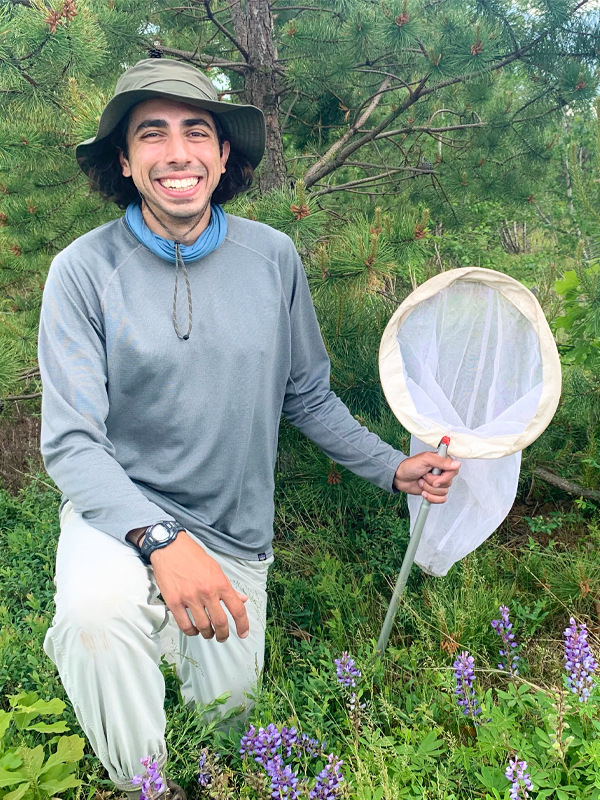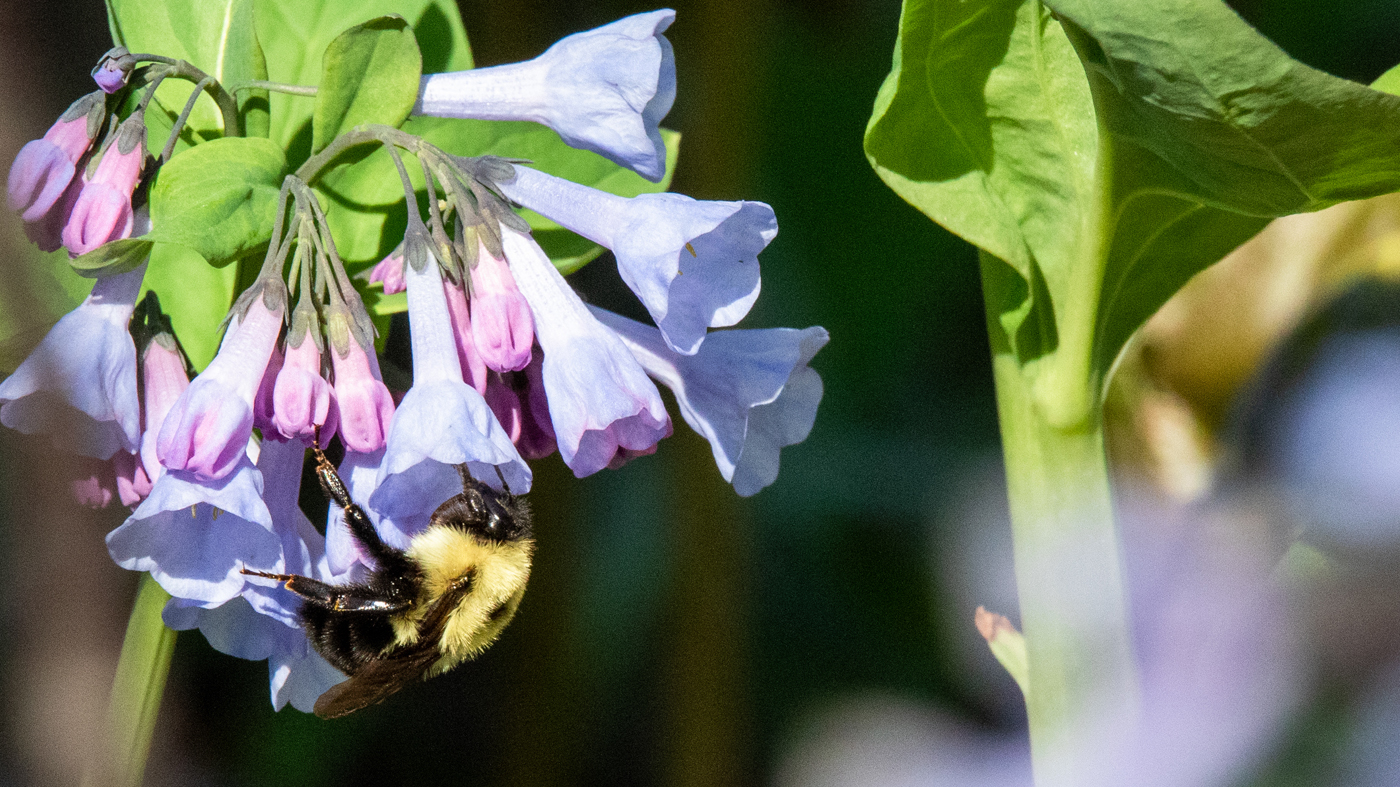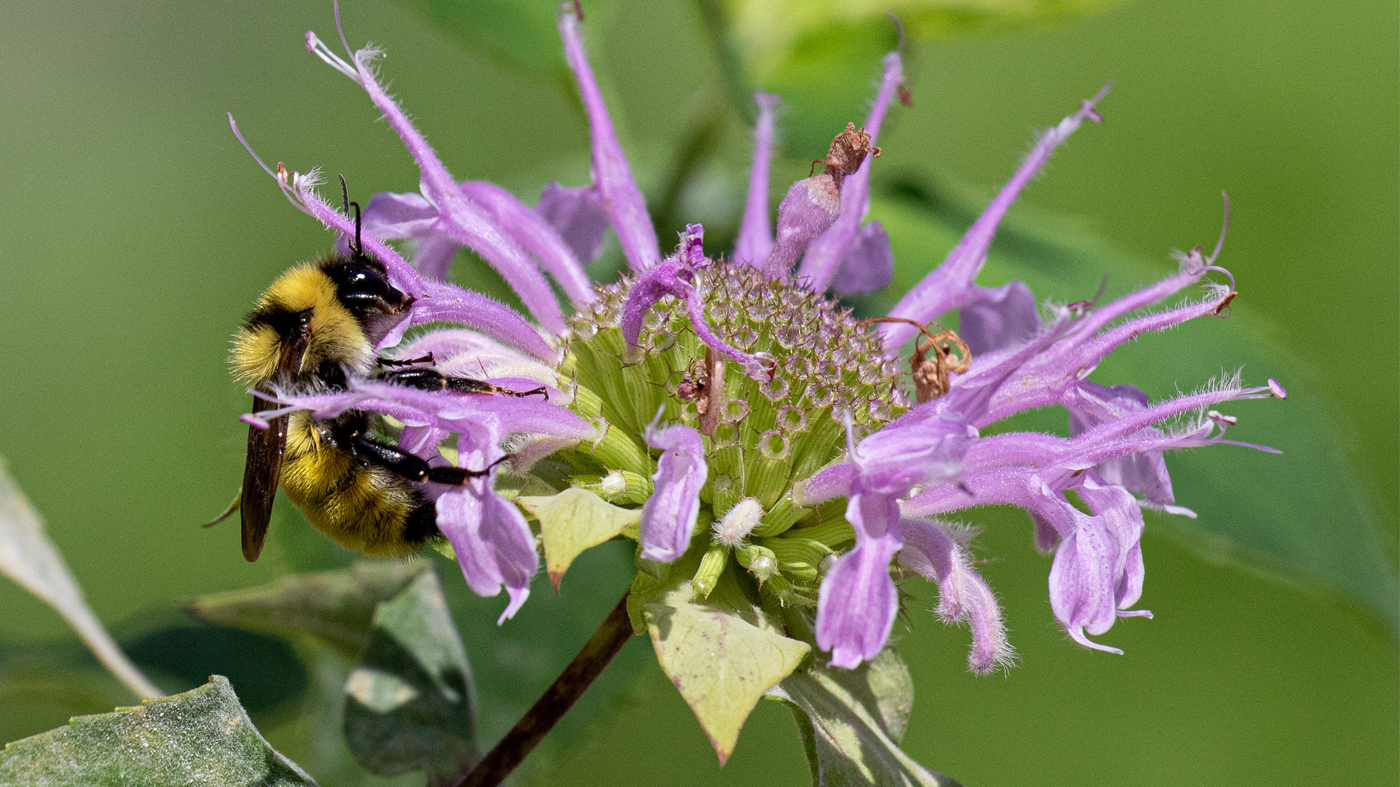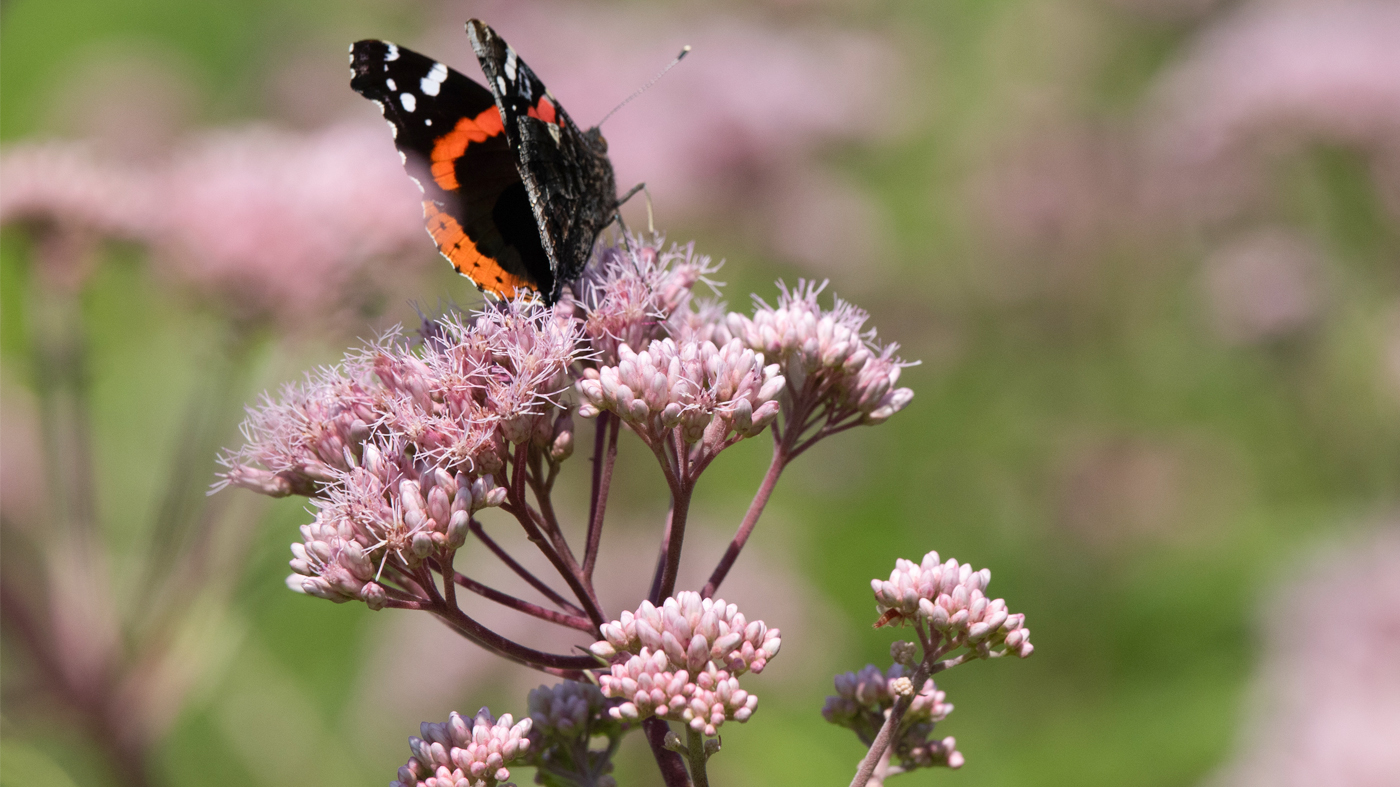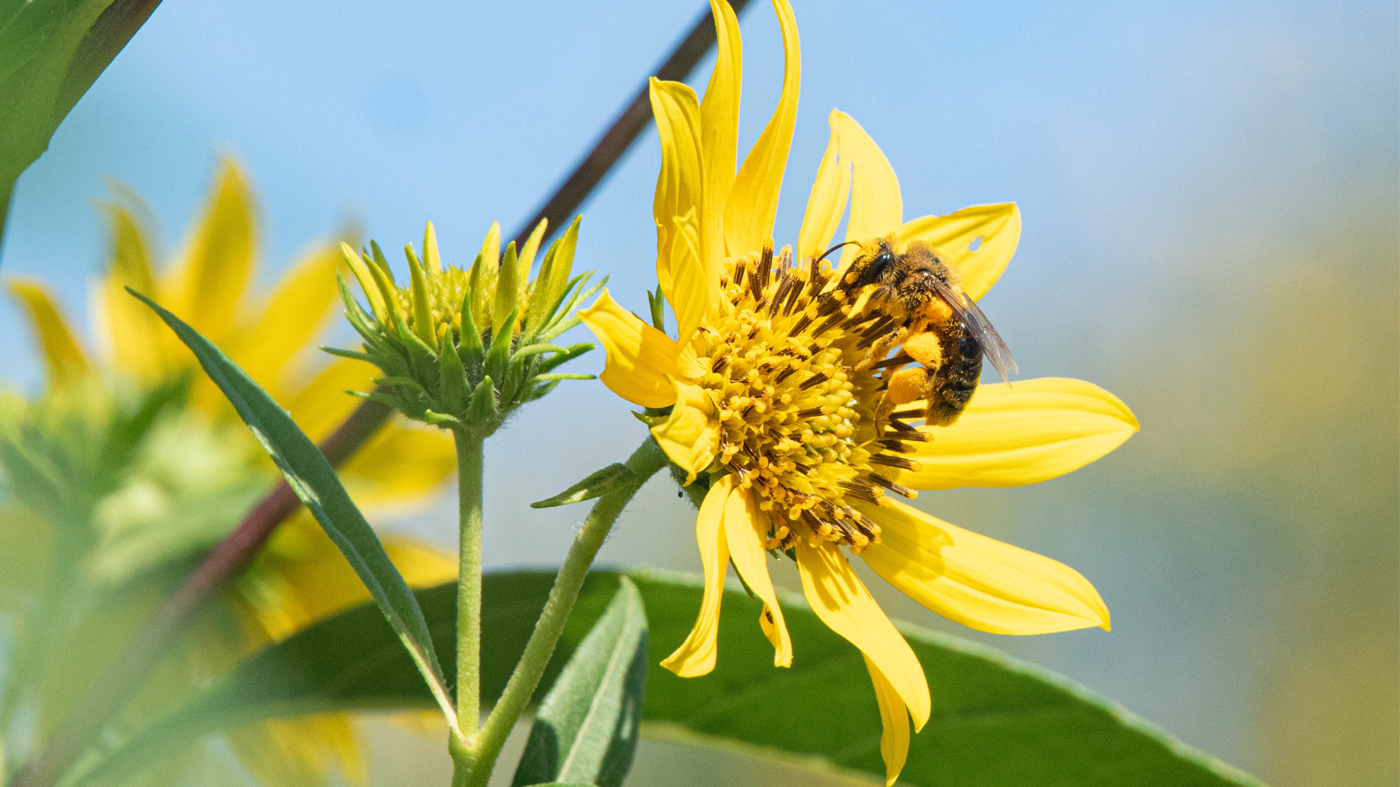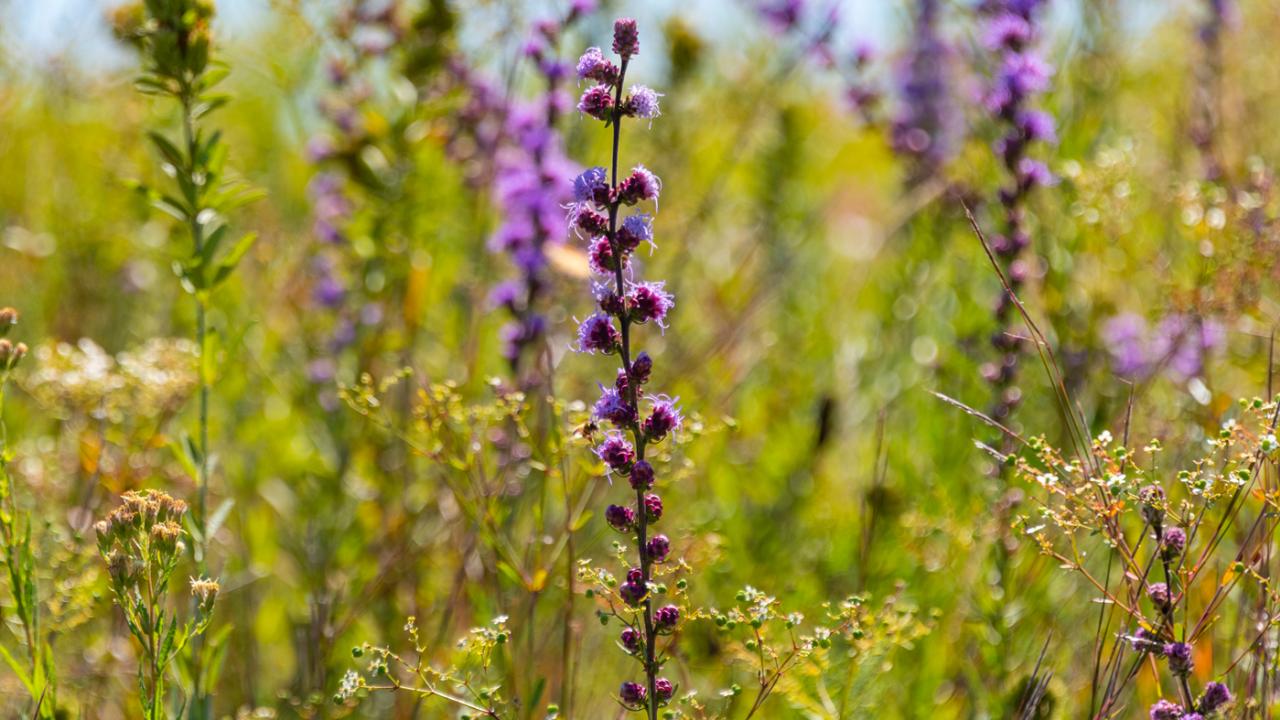

News
Garden Stories
Endangered Bee Discovered at the Garden
One morning in early July, while conducting routine pollinator assessments with my Research Experiences for Undergraduates (REU) student Jenny, we noticed something unusual: a bumblebee with a bright orange patch on its backside. Could it be? At the Chicago Botanic Garden?
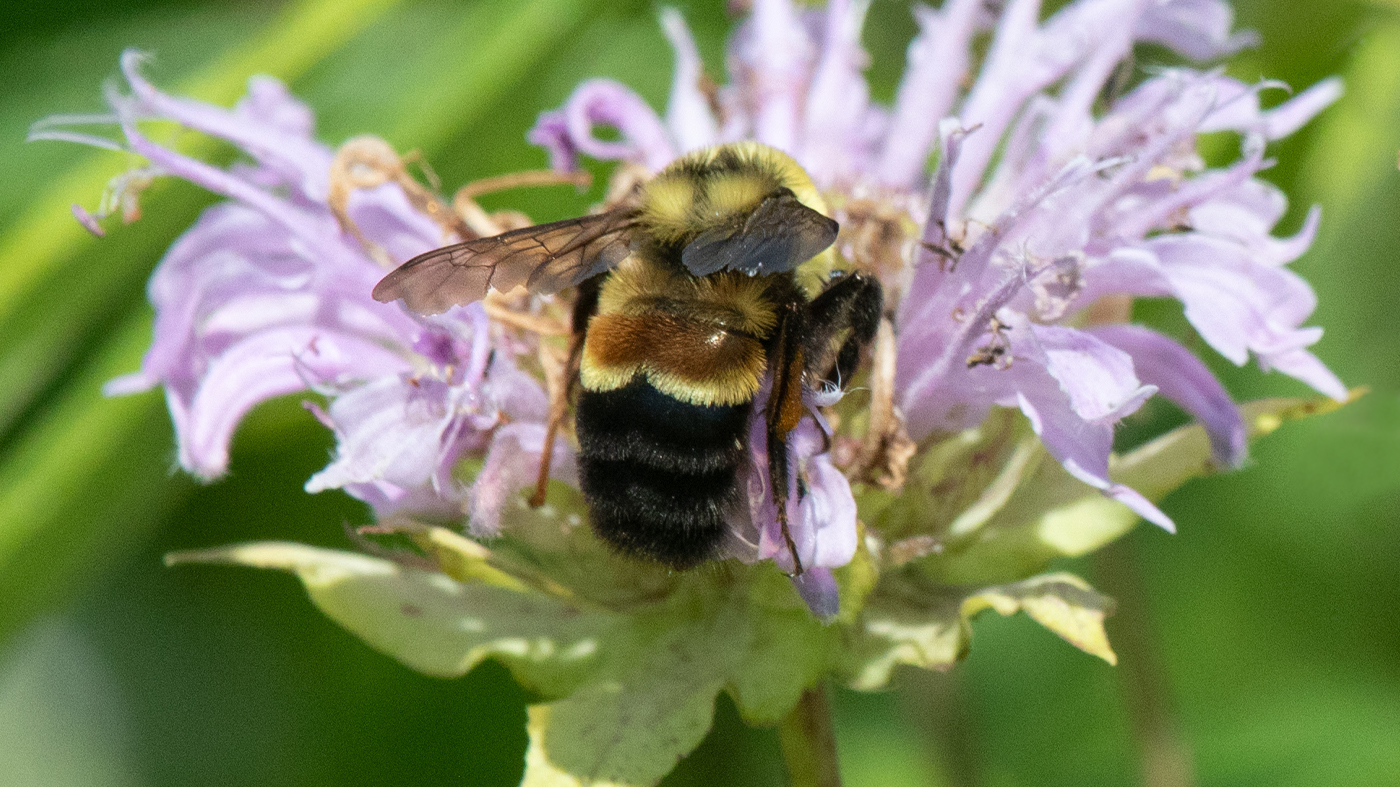
The endangered rusty patched bumblebee (Bombus affinis) sips nectar from wild bergamot (Monarda fistulosa). Photo by Nick Dorian.
Only one species in our region has this color pattern—the rusty patched bumblebee (Bombus affinis)—but this endangered species has vanished from most of its range and had never before been seen at the Garden. The bee in question flew off, and we were left wondering whether or not we had just discovered something truly remarkable.
The rusty patched bumblebee was once a common sight across the eastern United States, ranging from Minnesota to Massachusetts. Like all bumblebees, it is a superb pollinator of some of our favorite foods like tomatoes and blueberries, but also of beloved wildflowers like bluebells and sunflowers.
However, in the early 2000s scientists reported a sudden crash in its populations. By 2017, the species was officially listed under the Endangered Species Act after its range shrank by over 90 percent in less than a decade.
The most concerning part of this story is that we don’t know what caused the decline. Insects like bumblebees face myriad threats including habitat loss, pesticide use, and climate change—but identifying a single culprit is often difficult. Even worse, basic parts of the rusty patched bumblebee life cycle remain a mystery, such as where the species builds nests. So, if we don’t know what caused the decline, are we at an impasse, or are there steps we can take to help bring it back?
To attract the rusty patched bumblebee (Bombus affinis) and other Chicago area pollinators to your garden plant (top left, clockwise): Virginia bluebells (Mertensia virginica), wild bergamot (Monarda fistulosa), sunflowers (Helianthus species), Joe-Pye weed (Eutrochium species). Photos by Nick Dorian.
Home gardeners can contribute to conservation efforts by planting the preferred wildflowers of the rusty patched bumblebee, being mindful of pesticide use, observing pollinators in our gardens, and spreading the word to neighbors. If each of us plays our part, we can ensure that our backyards, gardens, and prairies buzz with beautiful pollinators for years to come.
In other words, saving a hive of pollinators will take a hive of people.


